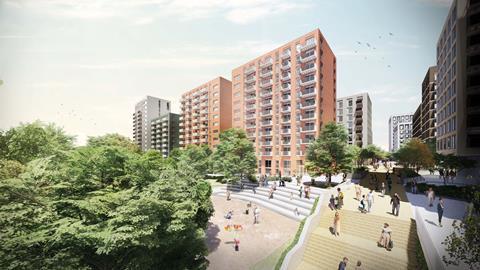Initiative from L&G Affordable Homes comes as provider given top grades by the regulator
‘For profit’ housing association L&G Affordable Homes is in discussions with traditional housing associations about plans to get institutional investors to fund the retrofit of existing affordable homes.

L&G Affordable Homes chief executive Ben Denton told Housing Today that his firm was “working on the maths” of how to “operationalise” the idea and was involved in a “number of active conversations” about it.
Denton’s comments came as the requirement for housing associations to invest significant sums to upgrade their existing homes, both in the light of growing concerns about poor stock condition and the need to address the net zero challenge, is being cited as a significant drag on their capacity to invest in new build.
The social housing regulator (RSH) said recently that housing associations invested a record £6.5bn into improving their existing stock in the 2021/22 financial year, and were forecasting further record levels of investment in the coming years, putting them under increasing financial pressure.
The news from L&G Affordable Homes came as the RSH today gave the ‘for profit’ landlord its top regulatory gradings for viability and governance after an in-depth assessment. This follows recent months in which the RSH has downgraded many of the largest developing housing associations due to the growing financial pressures facing them.
>> See also Can ‘for-profit’ providers rescue affordable housebuilding?
>> See also What the second staircase rule would mean for high-rise blocks
Ben Denton said: “Financial institutions haven’t bought yet into existing homes for retrofit. But I foresee that that will be the next big growth market.
“It works to inject liquidity into growth organisations, enabling associations to pass over a liability that is difficult for them to fund. It [retrofit] is their [traditional housing associations’] biggest challenge, but we think it has potential and it’s something we’re really interested in.”
‘For profit’ social landlords such as L&G Affordable Homes have thus far worked by getting institutional money such as pension or insurance funds to invest in mostly new build affordable housing for long-term stable returns.
Denton said he wasn’t yet ready to announce any prospective deals, and that any ventures would also be subject to consulting with existing tenants in the affected homes. “We are having a number of active conversations and lots of organisations are super-interested,” he said.

The RSH today said that L&G Affordable Homes Ltd, which delivered 1,600 homes last year, making it one of the biggest housing association developers, was rated V1 for viability and G1 for governance, and “has an adequately funded business plan, sufficient security in place, and is forecast to continue to meet its financial covenants under a wide range of adverse scenarios.”
L&G Affordable Homes has previously set out plans to grow to deliver 3,000 homes per year. By November 2022 it owned 1,950 properties and had sold 938 properties to a sister registered provider, Legal and General Affordable Homes (AR) LLP. The RSH added: “The regulator has assurance that the governance arrangements enable it to adequately control the organisation and to continue to meet its objectives.”
L&G’s potential expansion into retrofit comes as a number of traditional housing associations are understood to be working to set up their own “for profit” subsidiaries, following the lead of Hyde Housing, which set up ‘for profit’ Halesworth last year.
Helen Collins, Savills board director and head of its affordable housing consultancy business, said housing associations were considering “setting up their own for profits and partnering with third party capital, because a lot of investors haven’t got for profit entities and might not want to or be able to set up their own, but they might be very interested in investing in the sector. It’s sort of like a third wave of finance,” she said. “We’re currently talking to a number of housing associations that are exploring that route. There are different models.”
For more on the sector, read Housing Today’s in depth analysis here.











No comments yet